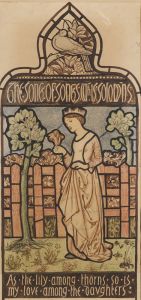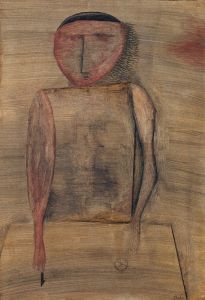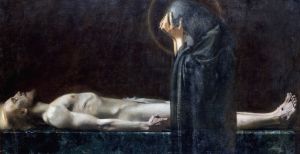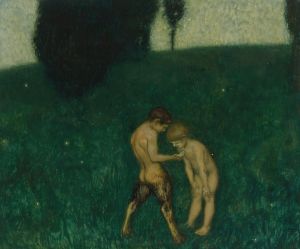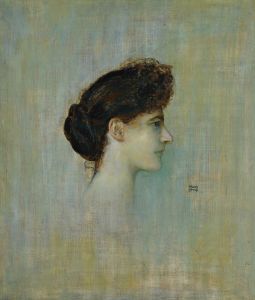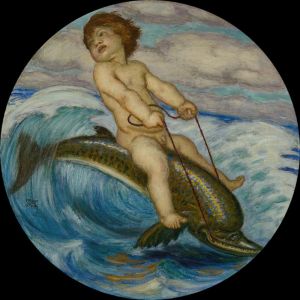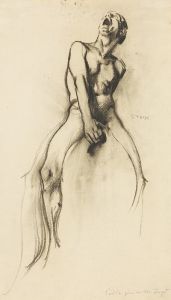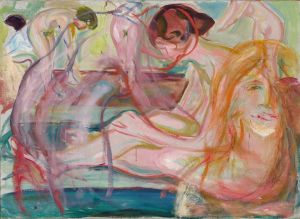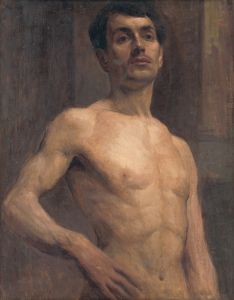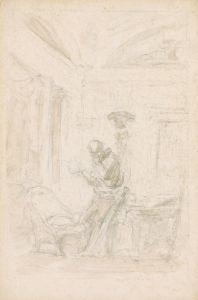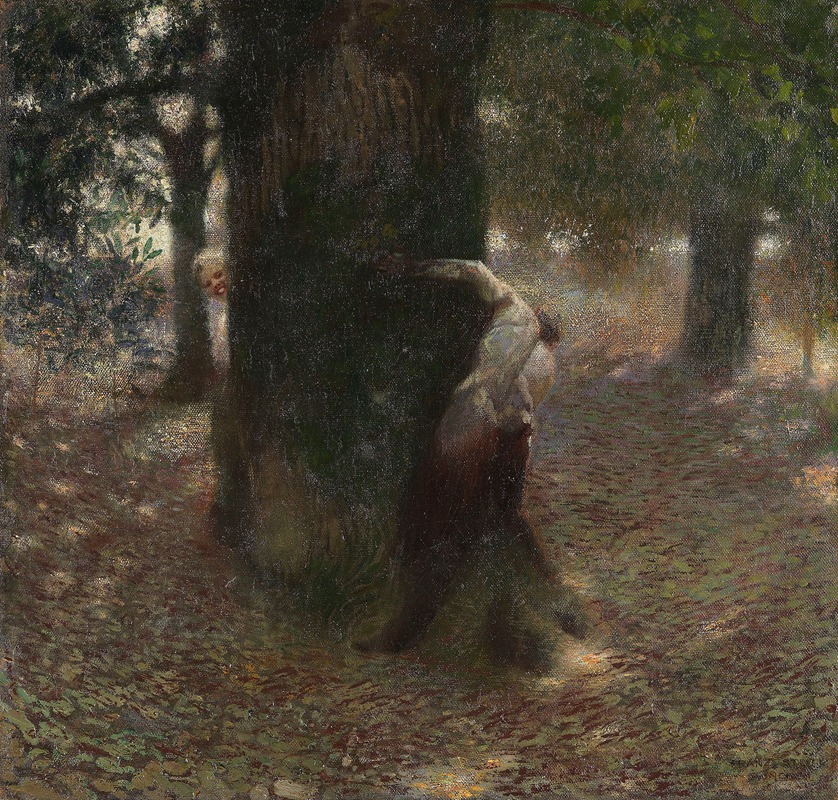
Neckerei
A hand-painted replica of Franz von Stuck’s masterpiece Neckerei, meticulously crafted by professional artists to capture the true essence of the original. Each piece is created with museum-quality canvas and rare mineral pigments, carefully painted by experienced artists with delicate brushstrokes and rich, layered colors to perfectly recreate the texture of the original artwork. Unlike machine-printed reproductions, this hand-painted version brings the painting to life, infused with the artist’s emotions and skill in every stroke. Whether for personal collection or home decoration, it instantly elevates the artistic atmosphere of any space.
Franz von Stuck's painting "Neckerei," which translates to "Mockery" in English, is a notable work by the German symbolist artist. Stuck, born in 1863 in Tettenweis, Bavaria, was a prominent figure in the Munich art scene and a founding member of the Munich Secession, an art movement that sought to break away from traditional academic art forms. His work is characterized by its exploration of mythological themes, allegorical content, and a distinctive style that blends elements of symbolism and Art Nouveau.
"Neckerei" exemplifies Stuck's fascination with mythological and allegorical subjects. The painting features a scene that is both enigmatic and evocative, typical of Stuck's symbolic approach. While specific details about the painting's creation and its exact date are not extensively documented, it is consistent with Stuck's broader body of work, which often delves into themes of human emotion, myth, and the interplay between the divine and the mortal.
Stuck's artistic style is marked by his use of dramatic lighting, rich color palettes, and a keen attention to detail, all of which are likely present in "Neckerei." His works often convey a sense of mystery and psychological depth, inviting viewers to engage with the underlying themes and narratives. Stuck's ability to blend classical motifs with modern sensibilities made him a pivotal figure in the transition from 19th-century academic art to the more experimental approaches of the early 20th century.
Throughout his career, Franz von Stuck received numerous accolades and held significant influence in the art world. He was appointed as a professor at the Academy of Fine Arts in Munich, where he taught and mentored several future luminaries of the art world, including Paul Klee and Wassily Kandinsky. Stuck's impact on the art community extended beyond his paintings, as he was also an accomplished architect and designer, known for his Gesamtkunstwerk approach, which sought to unify various art forms into a cohesive whole.
"Neckerei," like many of Stuck's works, reflects the artist's interest in exploring the complexities of human nature and the darker aspects of mythology. His paintings often depict figures from ancient myths, reimagined through a modern lens, and imbued with a sense of psychological tension. This approach aligns with the broader Symbolist movement, which sought to express the ineffable and explore the deeper truths of the human experience through art.
While specific exhibitions or collections featuring "Neckerei" are not widely documented, Stuck's works are held in high regard and can be found in various museums and private collections around the world. His legacy as a pioneer of Symbolism and a key figure in the Munich Secession continues to be recognized and celebrated in the art historical canon.
In summary, "Neckerei" by Franz von Stuck is a testament to the artist's skill in blending mythological themes with a modern artistic sensibility. Through his distinctive style and thematic focus, Stuck has left an indelible mark on the art world, influencing generations of artists and contributing to the evolution of modern art.





